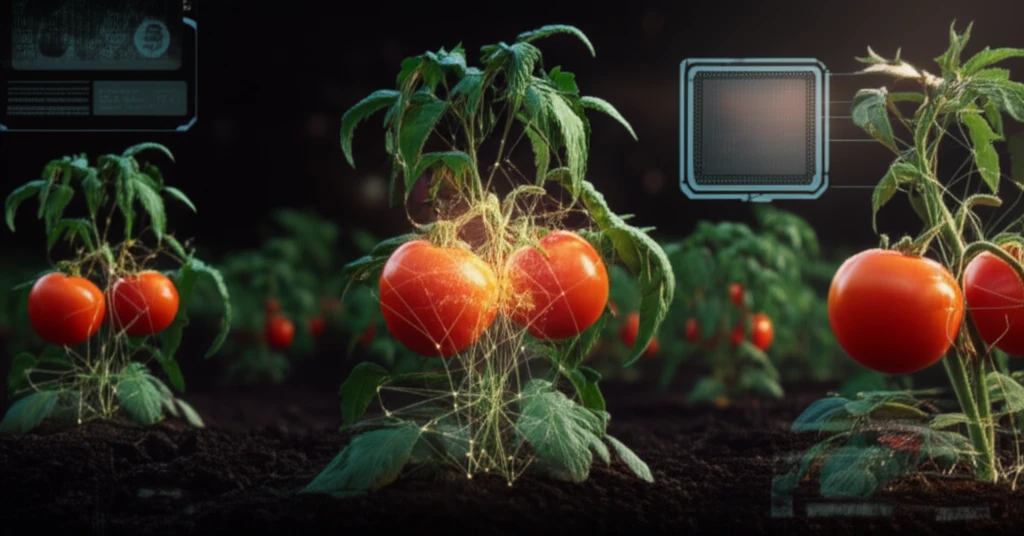
Spotting Tomato Diseases Early with AI: A New Way to Save Your Crops
"Fluorescence Imaging and AI Team Up to Detect Tomato Yellow Leaf Curl Before It's Too Late"
Tomato Yellow Leaf Curl Disease (TYLCD) is a major threat to tomato crops worldwide, capable of causing significant yield losses. Early detection is crucial, but traditional methods often rely on visible symptoms that may not appear until the disease is well-established, making timely intervention difficult.
Now, a groundbreaking study explores the use of fluorescence imaging combined with artificial intelligence to identify TYLCD in tomato plants even before they show obvious signs of infection. This innovative approach promises to give farmers a powerful new tool to combat this devastating disease.
This article delves into the details of this research, explaining how the technology works, what the key findings are, and what the implications could be for tomato growers seeking to protect their crops.
How Does Fluorescence Imaging Spot Early Signs of TYLCD?

The core of this new method lies in the way healthy and infected plants respond differently to light. Healthy plant tissues naturally emit fluorescence when exposed to certain wavelengths of light. When TYLCD infects a tomato plant, this fluorescence pattern changes, even before visible symptoms like leaf curling or yellowing appear. Researchers used a specialized high-speed camera and carefully chosen filters to capture these subtle changes in fluorescence.
- Capturing Fluorescence: A high-speed camera records the fluorescence emitted by tomato leaves under specific lighting conditions.
- Isolating Leaf Pixels:Sophisticated image processing techniques automatically separate the leaf pixels from the background in each image.
- Extracting Key Features: The system analyzes both the texture of the leaf and the intricate patterns of its veins, using a method called Gray-Level Co-occurrence Matrix (GLCM) to pull out meaningful data.
- AI-Powered Analysis: Artificial intelligence algorithms then analyze these texture and vein features to distinguish between healthy leaves and those infected with TYLCD.
The Future of Disease Detection: What This Means for Farmers
This research demonstrates the potential of using fluorescence imaging and AI to create a non-destructive method for early TYLCD detection. The system achieved high accuracy in identifying infected leaves, even before they showed visible symptoms.
This offers several key benefits:
<ul><li><b>Early Intervention:</b>Detecting the disease early allows farmers to take swift action to prevent it from spreading, potentially saving entire crops.</li><li><b>Reduced Losses:</b>By stopping the disease in its tracks, farmers can minimize yield losses and economic damage.</li><li><b>More Sustainable Practices:</b>Targeted interventions reduce the need for widespread pesticide applications, promoting more sustainable farming practices.</li></ul>
